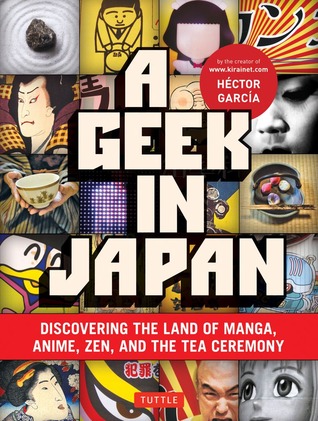I remembering hearing about this book when it first came out, although I can’t remember if the reaction towards this book was positive or negative. So, when I saw it at Rainbow Plaza, I was really excited to read it and find out what it was like.
A Geek in Japan is a basic introduction to Japan. It focuses on Tokyo, and Fukuoka isn’t discussed in it at all. It is mentioned as a place to travel to when you have more time, but there are no travel recommendations. I would have liked an entry or two about Kyushu, but I guess that’s where this blog comes in 😀
Personally, I was pleasantly surprised by this book. Although it’s called “A Geek in Japan”, it covers much more than just manga and anime. There are sections on Shinto and Buddhism, working life in Japan (I’ve never worked in a Japanese company, so I was really interested in that), Japanese daily life and Japanese culture (like honne versus tatamae). The breadth of this book is much more than what its cover indicated.
As for the depth of this book. Well, it may be best to just think of this book as an introduction to Japanese culture. To understand any one aspect of it (for example, feminism in Japan), you really should be reading a few books that specifically address this topic. Most of the entries in this book are one or two pages long, although they are loosely connected and divided into chapters. The length of the entries mean that there’s not much space to do anything but provide an introduction.
The only complaint I noticed is that there are a few errors in the book. For example, one of the “secret places” reccomended was the Studio Ghibli museum. Now, I’ve been there and I love that place. But, as I said in my original post, this is a really popular place, so you need to book tickets there one month in advance. They sell out really quickly too. Unfortunately this isn’t mentioned in the book.
The others are basically Japanese complaints. For example, ついてます is romanised as “tsuteimasu” when it should be “tsuitemasu” (or tsuite imasu, if he added the “i” after “te”)
Another two that I think are fairly major are:
“Oniku ga haitemasu ka = Do you have meat?” Actually, this question asks “is there meat in this?”, which I think is pretty different from “Do you have meat?” (The Japanese translation for that is お肉(または「肉料理」)があります・を売っていますか?oniku (or nikuryouri) ga arimasu ka / wo utteimasu ka? )
The same goes for the questions about fish and vegetables.
In conclusion, apart from a few errors, I think this is a pretty good introduction to Japan. It’s entertaining, and the information isn’t too much, which is good for the absolute beginner to Japan. If you’re looking for in-depth articles though, you’re out of luck.
Affliate Link: If you’d like to support this site (and you want to buy this book), please use this affiliate link: Buy “A Geek in Japan” from Amazon.com

